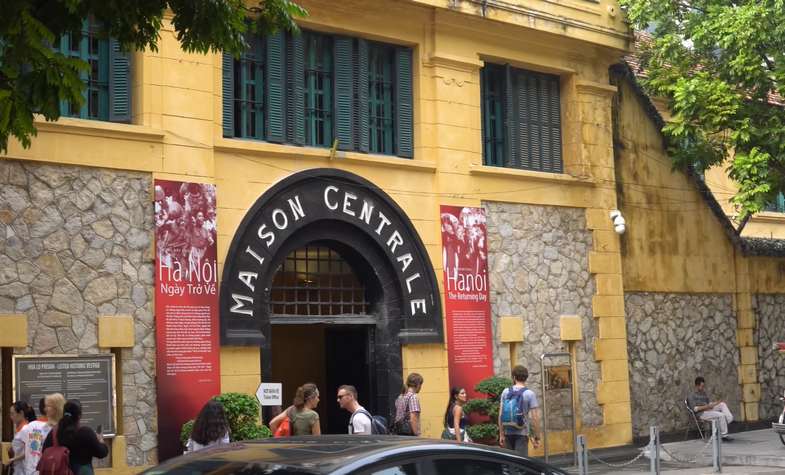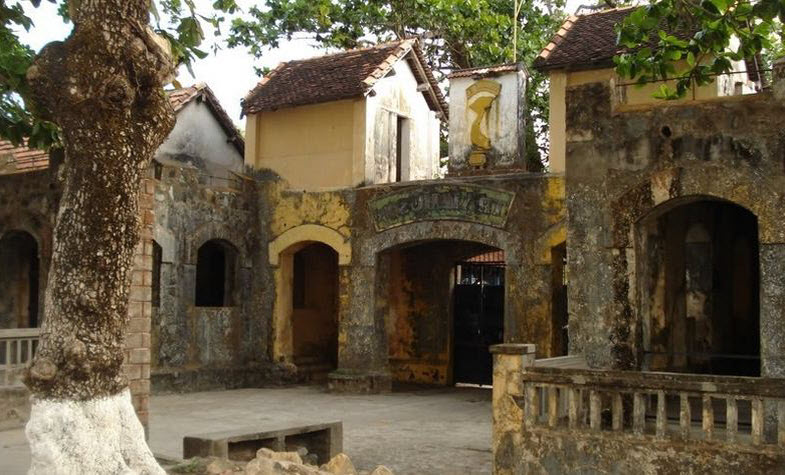The territory of Vietnam has found evidence of inhabitants since Paleolithic times and primitive agriculture was practiced here around 10 thousand years ago. It is said that the beginning of Vietnamese civilization dated back to the late Neolithic, Early Bronze Age. The ancient period stood out with the Dong Son culture and delicate Dong Son bronze drums along with the development of wet-rice agriculture and bronze casting. Bronze weapons, tools, and drums excavated recently prove that the bronze casting techniques were local origination from around 2000 to 1500 BC.
Dynastic era
The legend of Hong Bang reign under the Hung kings - the first King of Van Lang nation dated back around 4 thousand years ago was regarded as the forerunner of Vietnam nowadays. Van Lang and later Au Lac was one of the hundreds of independent states in the south of China and Southeast Asia until 111 BC when the Chinese Han dynasty absorbed this land into their empire. Nearly a thousand years after, former Au Lac was ruled by feudal China but the thirst for independence and self-control never burn out in Vietnamese people’s minds. In the history of the country, this is called the “dark age” but names of national heroes and their movements against the invaders had featured the Vietnamese identity.
In 938 CE, Vietnam regained independence after a glorious victory of Ngo Quyen and his army over the Chinese troop on a river battle near Halong bay.
From the 11th to 14th century, the nation went through a golden era during the rules of the Ly and Tran Dynasty with a massive change of economic, military power, and a great expansion of the territory.
In the 13th century during the rule of the Tran Dynasty, three great victories were made over the Mongols of Mongke khan and Kublai khan. These military victories are closely connected to the name of one of the greatest national heroes, Tran Hung Dao, the Father of the Nation whose name now can be seen on many streets of Vietnam. In the early 15th century, the country’s independence was once again interrupted by another Chinese invasion but was restored in 1428 after a long-armed resistance under the leadership of Le Loi, a wealthy farmer from Thanh Hoa province who became the founder of the Le Dynasty after his victory. Vietnam reached its zenith in the 15th century with the great achievements of both economy and military power and expansion of territory.
Since the middle of the 16th century, Vietnam has been in instability within the state that later resulted in the division of the country under the rules of Trinh Lords in the North and Nguyen Lords in the south at around 16 parallel. The country only reunited when the Tay Son brothers defeated the two clans and found the Tay Son Dynasty. But the Tay Son, who remembered by their victories over the Siam and Qing Chinese was short-lived after the death of its key man, Emperor Quang Trung. In 1802, Nguyen Anh, a surviving member of the Nguyen Lords family defeated the Tay Son and found the Nguyen Dynasty which ruled the country until 1887 and nominally until 1945.
French colonization
A series of French colonial conquests from 1958 to 1887 turned Vietnam into part of a French colony in Indochina. Under French rule, Vietnam was divided into 3 parts: Cochinchina, the south of Vietnam; Annam, the center of Vietnam and Tonkin, the north of Vietnam.
The French colonialists imposed significant political and cultural changes on Vietnamese society and turned it into a place to exploit natural resources and cheap labor as well as conscripting Vietnamese men and used them as gun-fodder for their games on the other battlefields. Along with all these, the French also opened new roads and constructed the railway that connected the country that enabled their transportations.
Thousands of people died in rubber, coffee plantations, or mines of different types because of malnutrition, hard forced labor, and subhuman treatment.
Many insurrections were crushed and many Vietnamese revolutionary and intellectuals were rounded up or imprisoned for their revolutionary activities or voice of freedom.

The situation became worse when in 1940 the Japanese attacked the country and the French who could not stand with the power of the Japanese agreed to share the country by both. To serve their military needs, apart from exploiting natural resources and high requisition of rice, the Japanese applied a policy of forcing Vietnamese people to grow industrial crops instead of foodstuffs. These Japanese policies along with dike breaches, flood, and bad harvest during the year 1944-1945 caused a horrific famine in which 2 out of 10 million North Vietnamese people starved to death.
In August 1945, a revolution under the leadership of Ho Chi Minh and the Viet Minh successfully occupied the power from the Japanese and French and was followed by the resignation of the last puppet Emperor.
Ho Chi Minh read the declaration of independence of Vietnam on 2nd September 1945, opening up a new era for the country after nearly a hundred years under the foreign rule.
But the French did not want to give up their colony and returned after the failure of many negotiations on the table for a peaceful solution for the country. In December 1946, Ho Chi Minh called for armed resistance against the French and evacuated his force to the mountainous area. After 8 years of fighting, the Viet Minh controlled much of Vietnam and neighboring Laos and finally won the game after overwhelmingly defeated French troops in a decisive battle in Dien Bien Phu, a place near Lao’s border. The victory of the Vietnamese army forced the French to sit down for an agreement signed in Geneva that brought to an end of French troop presentation in Vietnam.
The Vietnam War and American involvement
According to the Geneva agreement, the country was temporarily divided into two zones at Ben Hai River, near the 17 parallel, which was applied. North Vietnam was under the control of Ho Chi Minh’s government while the South was controlled by the State of Vietnam, a government elected by the French in 1948 within French Union. All French troops would withdraw south of the Ben Hai River before retreating home and a nationwide election would be organized in 1956 for national reunification.
The election was never been organized and the country was divided until 1975 after another 21 years of fighting.
America unofficially got involved in the mess in Vietnam from 1947 with their supports to the French expeditionary troop. This American policy was largely supported by Domino Theory that was dominated by the fear of an expansion of Communism in Asia and the World. The Americans saw France’s colonial war in Vietnam as an important part of the worldwide struggle to stop Communist expansion.
Right after the Geneva Accord was signed, America sent groups of military advisers to South Vietnam to assume the responsibility of training the South Vietnamese Army. The number of these men was up to more than 15 thousand by the year 1963.

Despite the massive aids of both material and personnel from the US, the “Outpost” of the Free World against Communism (as the Americans called the Republic of Vietnam – South Vietnam) became more and more deteriorated. Viet Cong, South Vietnamese communist fighters, and their supporters proved to be much more competent in the game with the South Vietnamese army. The prospect of their victory was not very far when they could control much of the countryside and their force even approached Saigon and occupied its vicinities. That situation forced the US to take another risky step. In 1964, the Tonkin Gulf incident was made in which two US warships were said to have under attack ưithout cause while anchored offshore in the coast of northern Vietnam. It was simply just a story made up by some politicians sitting in aircon-room somewhere half a circle of the globe away from Vietnam but the impression it made was strong enough to make the American Parliament believed that they need to send their combatant troop to Vietnam to protect American force and the “benefit of America”.
US aircraft were sent to bomb North Vietnam along with series of military campaigns in the South. These operations were obviously to share fire with the South Vietnamese government and army who was on their serious decline.
In March 1965, the first American combat troops splashed ashore at Danang and the number increased up to around nearly 500,000 by the year 1967. The more American boys were sent in, the more issues they got. America now realized that the reality on this soil was far different from the painting they had drawn with their imagination.
In 1968, when the war was at its nadir, a talk was opened in Paris for a cease-fire resolution. Until an agreement was reached in 1973, both sides suffered huge losses with hundreds of thousand kills, and the country was devastated.
The total withdrawal of US troops and their allies out of Vietnam in early 1973 gave a never-been-better chance for Viet Cong and North Vietnamese troops. Two years later, on 30th April 1975, North Vietnamese troops and Viet Cong occupied Saigon, the capital of South Vietnam, brought an end to the war in the country.
After the reunification
The consequence of the war left the country in a serious problem with almost very little industrial infrastructure and farmland was destroyed or poisoned. Millions of people had been physically or mentally affected and many post-war social problems need to be resolved. Supports from Communist countries were cut down and Vietnam was ostracized by the Western world. The program of nationalization of private property along with an ineffective management system caused a serious economic problem. A huge ware of refugees with millions of people fled the country on ramshackle boats, creating an international humanitarian crisis.
At the same time, Vietnam got involved in another conflict with its former ally, the Khmer Rouge, who had been razing the Vietnamese border and massacring the inhabitants from 1975. Vietnamese army entered Cambodia at the end of 1978 and successfully kicked the Khmer Rough off from the power to the jungle. This action of Vietnam was unacceptable to China, a Khmer Rough ally. In February 1979, Chinese forces invaded Vietnam and devastated six bordering provinces before they withdrew more than two months later.
To cope with economic and social problems and to prevent the country from broken, at the Sixth Congress of the Communist Party organized in 1986, Vietnam decided to change their policy and carried out a renovation program called “Doi moi” in which the collective system of the property was gradually abolished, farmland was assigned to farmers and political and economic multilateral relations was promoted. The “Doi moi” soon blew a new vitality to the country which had been so emaciated after decades of war, isolation, and the ineffective centralized economic system of voluntarism.
Vietnamese troops retreated from Cambodia in 1989 after 10 years there. Two years later, the relation between Vietnam and China was normalized. It’s the first time the country totally at peace.
From the early 1990s, the country experienced a massive change both in social and economic respects. Foreign investment poured in. Small businesses of all kinds reaped the benefit of liberalization. Signboards of Coca-Cola, Samsung, Honda, and so on popping up everywhere gradually brushed aside revolutionary imagery. From a food aid receiver, Vietnam soon became one of the largest rice exporters in the World at the end of the 1990s. The industrialization and modernization process has pushed the country ahead though a bit slow down recently due to World’s economic crisis. Though there are still somewhere unsatisfactoriness most people when asked feel optimistic about the prospect and future of the country.

